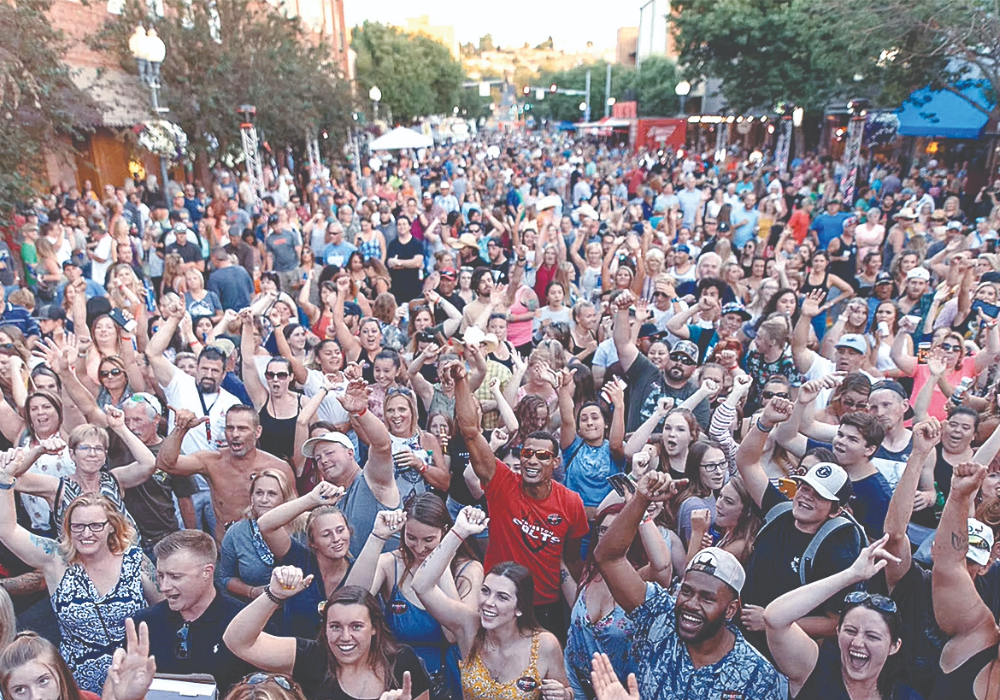Hard times: ‘The Four Winds’ details life in the Dust Bowl
Published 9:55 am Monday, November 11, 2024

- The Four Winds.jpg
“The Four Winds,” by Kristin Hannah, begins just before the Great Depression and centers on a family living on a farm in a small town in East Texas.
Trending
The Martinelli family is struggling. There are almost daily dust storms and they contend with beds full of dust, handkerchiefs to keep from inhaling the fine dust particles (to ward off dust pneumonia), starving cows that give dirty milk and crops that wither in the heat.
The story begins with Elsa, whose family, compared to others, is well-off. However, she learns early on that her family does not love her. Unlike her two sisters, Elsa is tall and plain. She is quiet and prefers reading to other activities. At 25, she is unmarried and has resigned herself to a life of spinsterhood.
One day, she buys a bolt of red silk at the mercantile. Taking it home, her mother says it would make a pretty dress for one of her sisters.
Trending
Fabric stored in her room, Elsa begins to think about her future. On impulse she decides, like one of the heroines in her novels, that she can take charge of her life and makes herself a dress from the red silk.
She puts it on, dons a smart little hat and heels, and sneaks out of the house. Wandering the town, she meets Rafe, an Italian immigrant. They strike up a conversation. Rafe likes her and after her first intimate encounter, Elsa finds herself pregnant.
When her family finds out, they kick her out. With nowhere to go, she packs a suitcase and presents herself to Rafe and his family. They take her in and ultimately they all grow to love each other and form a family — except Rafe, who does not return Elsa’s love.
As the Depression grows more severe, the bank starts to foreclose on farm after farm, forcing many to seek the “land of opportunity” in California, including Rafe, who leaves his family behind.
Elsa is on her own with two children. She considers leaving for California but loves the land as much as her immigrant Italian in-laws, who she knows will not leave.
Eventually, she makes the painful choice to take her children to California, which means leaving the farm and people she has grown to love.
It’s not easy in California, where the family experiences discrimination and more hardship. No one wants to hire or rent to “Okies.” The only work they can find is picking cotton, which pays barely enough to feed her children.
Later, while camping with other migrant workers on the bank of a river, a flash flood washes away everything they own. Jack Valen, a member of the Communist Party, guides them to a cotton grower who houses workers on his land.
They receive a cabin and food and are first in line for jobs when it is time to pick the cotton.
But the brightness soon turns to frustration when they learn they must buy everything from the company store on credit.
Elsa finds herself in a downward spiral with no way out. Everywhere she turns people are angry, including her 14-year-old daughter, Loreda. Finally, Jack convinces her to help him unionize the farm workers for better pay and working conditions.
“The Four Winds” is a novel that brings to life the realities of a time in American history that divided our nation and the battle between the haves and the have-nots.
It is a novel of hope and courage, and a testament to the strength and determination of the human spirit to survive against all costs.
Pacific Northwest Indie Bestsellers
HARDCOVER FICTION
1. “Absolution” by Jeff VanderMeer
2. “Intermezzo” by Salley Rooney
3. “Playground” by Richard Powers
4. “The Life Impossible” by Matt Haig
5. “The Women” by Kristin Hannah
6. “James” by Percival Everett
7. “All Fours” by Miranda July
8. “Somewhere Beyond the Sea” by T.J. Klune
9. “We Solve Murders” by Richard Osman
10. “The Mighty Red” by Louise Erdrich
HARDCOVER NONFICTION
1. “Patriot: A Memoir” by Alexei Navalny
2. “The Message” by Ta-Nehisi Coates
3. “War” by Bob Woodward
4. “Revenge of the Tipping Point: Overstories, Superspreaders, and the Rise of Social Engineering” by Malcolm Gladwell
5. “Be Ready when the Luck Happens: A Memoir” by Ina Garten
6. “Meditations for Mortals: Four Weeks to Embrace Your Limitations and Make Time for What Counts” by Oliver Burkeman
7. “The Anxious Generation: How the Great Rewiring of Childhood is Causing an Epidemic of Mental Illness” by Jonathan Haidt
8. “Nexus: A Brief History of Information Networks from the Stone Age to AI” by Yuval Noah Harari
9. “Into the Uncut Grass” by Trevor Noah
10. “The Creative Act: A Way of Being” by Rick Rubin








